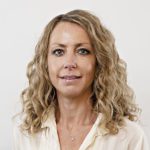Future feed resources in sustainable salmonid production: A review
Publikasjonsdetaljer
Tidsskrift : Reviews in Aquaculture , vol. 14 , p. 1790–1812 , 2022
Utgiver : John Wiley & Sons
Internasjonale standardnummer
:
Trykt
:
1753-5123
Elektronisk
:
1753-5131
Publikasjonstype : Vitenskapelig oversiktsartikkel/review
Sak : 4
Lenker
:
ARKIV
:
hdl.handle.net/11250/2984538
DOI
:
doi.org/10.1111/raq.12673
Forskningsområder
Fôrutvikling og ernæring
Har du spørsmål om noe vedrørende publikasjonen, kan du kontakte Nofimas bibliotekleder.
Kjetil Aune
Bibliotekleder
kjetil.aune@nofima.no
Sammendrag
Aquaculture is one of the most resource-efficient and sustainable ways to produce animal protein. The Food and Agriculture Organization predicts that cultivated aquatic species will provide around 53% of the world's seafood supply by 2030. Further growth of intensive farmed aquatic species may be limited by a shortage of feed resources. The aquaculture sector therefore needs to intensify its search for alternative ingredients based on renewable natural resources. A significant increase in production will require an accelerated transition in technology and production systems, better use of natural available resources, development of high-quality alternative feed resources and exploitation of available space. The present review discusses the urgent need to identify appropriate alternative ingredients for a sustainable future salmonid production. We describe and evaluate the most promising marine ingredients, including low-trophic species (mesopelagic fish, zooplankton, polychaetes, macroalgae and crustaceans), novel microbial ingredients (bacteria, yeast and microalgae), insects (black soldier fly, yellow meal worm and crickets), animal by-products (poultry meal, meat and bone meal, blood meal and hydrolysed feather meal) and by-products from other commercial productions (trimmings and blood). Furthermore, we discuss the available volumes and need for new processing technologies and refining methods to ensure commercial production of nutritionally healthy ingredients. The essential production steps and considerations for future development of sustainable and safe seafood production are also discussed.




